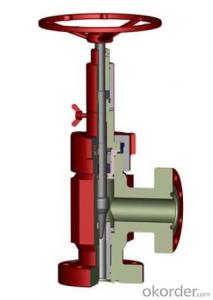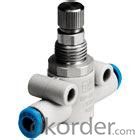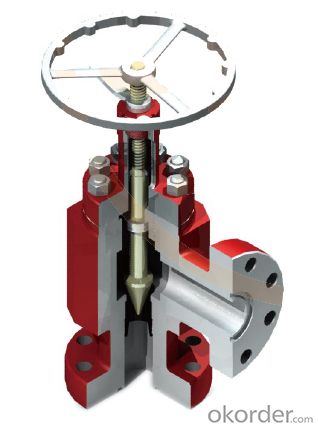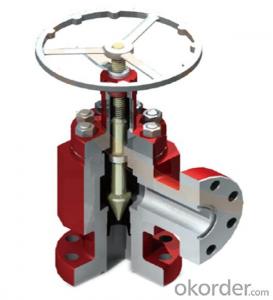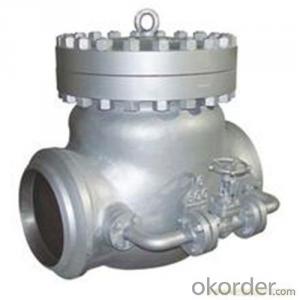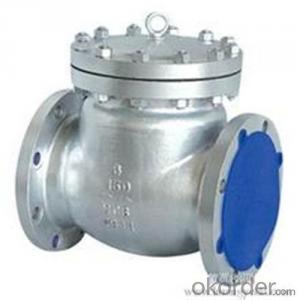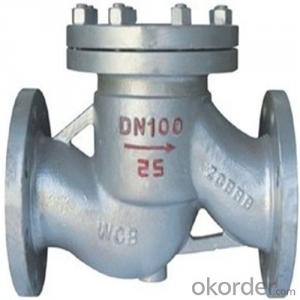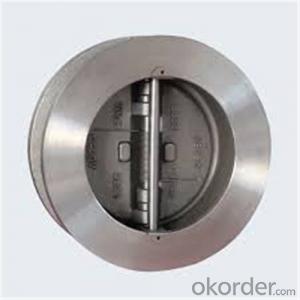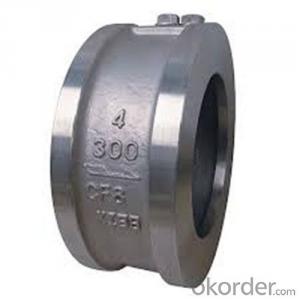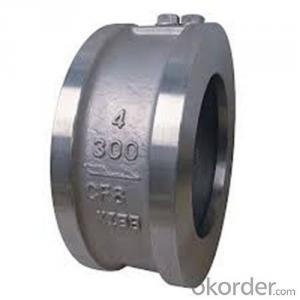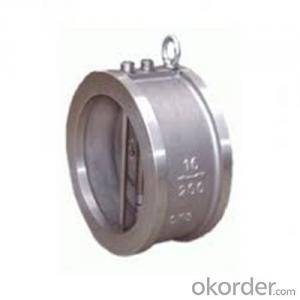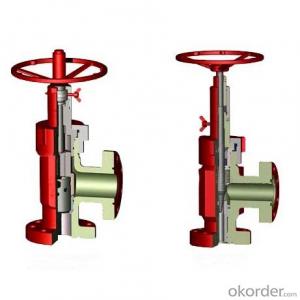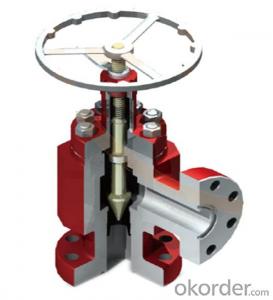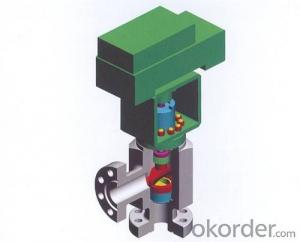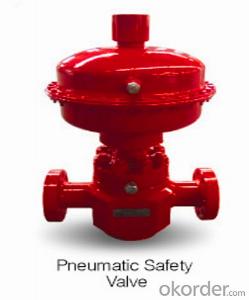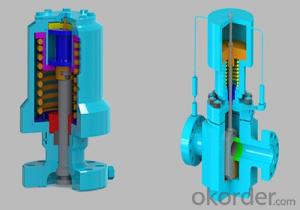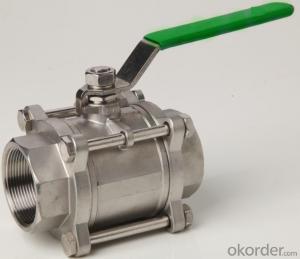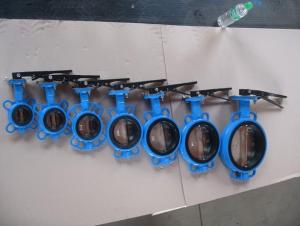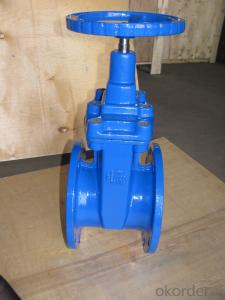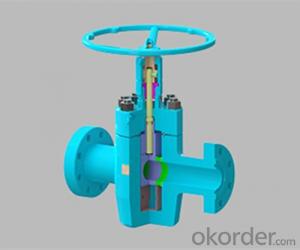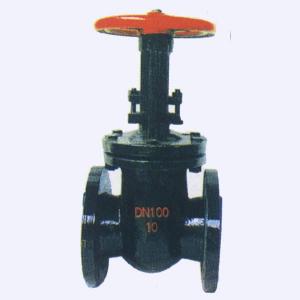API 6A Angle Needle Choke Valve for Wellhead
- Loading Port:
- Tianjin
- Payment Terms:
- TT OR LC
- Min Order Qty:
- 100 pc
- Supply Capability:
- 8000 pc/month
OKorder Service Pledge
OKorder Financial Service
You Might Also Like
Specification
1. Structure of API 6A Angle Needle Choke Valve Description
Exchanging the parts form fixed, adjusted choke valve.
Bonnet nut is to prevent the nut loosen and as an indispensable part
Befordromoving the nut completely, established the safety performance can release valve body residual stress
Interchangeable parts for specific pressure gauge, for example, the same empty cock and bonnet device used in 2,000-15,000 psi working environment Pointer and seat of stainless steel adjustable chock valve needle
2. Main Features of API 6A Angle Needle Choke Valve
1) Advanced test for quality
2) MTC provided
3) Good price and service
3. API 6A Angle Needle Choke Valve Images
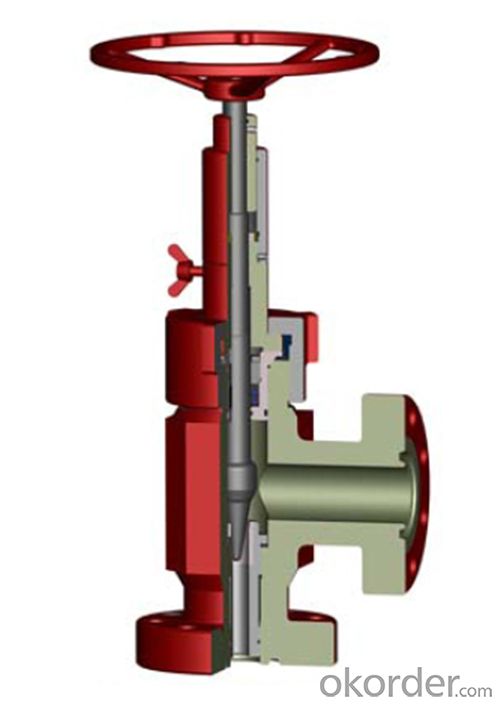
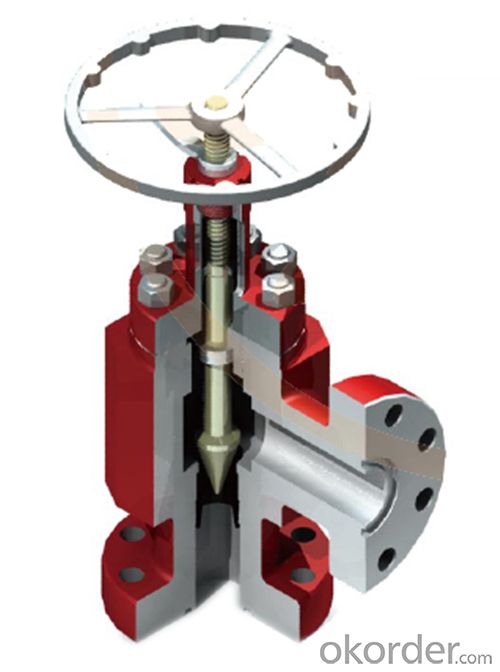
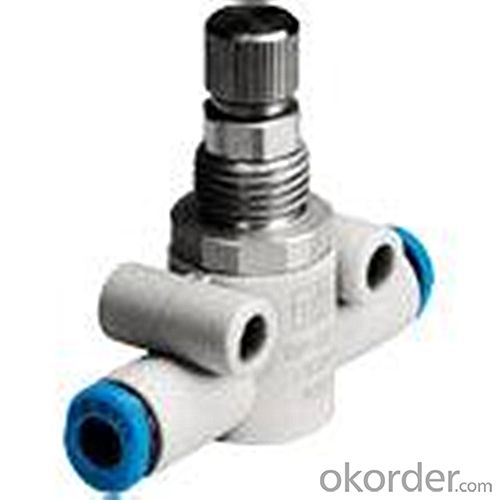
4. API 6A Angle Needle Choke Valve Specification
Working Pressure :2,000Psi ~20,000Psi
Nominal Size :1.13/16"~7.1/16" (46mm~180mm)
PR Class :PR1~4
Working Temp:-46℃~121℃(LU)
PSL Class :PSL1~4
Working Medium: oil, gas, water, mud, gas with H2S,CO2
Material Class :AA、BB、CC、DD、EE、FF、HH
5. FAQ of API 6A Angle Needle Choke Valve
We have organized several common questions for our clients,may help you sincerely:
1) How about your company?
One of the leading manufacturers and suppliers specializing in this product in China, supply a wide variety of accessories consists of our one-stop sales. The integrated sales & service ensures customers with various demands an easier access for purchasing management.
2) How to guarantee the quality of the products?
We have established the international advanced quality management system,every link from raw material to final product we have strict quality test;We resolutely put an end to unqualified products flowing into the market. At the same time, we will provide necessary follow-up service assurance.
3) How long can we receive the product after purchase?
In the purchase of product within three working days, We will arrange the factory delivery as soon as possible.
- Q: Full Bore ball vale and Reduce bore ball valve have diferent with each other ,I want to know about them.
- Full Bore Valve
- Q: Ok so I have a Honda Civic 97 lx and what happened was that when I did an oil change the next day the car started over heating, the car only had pure water and no coolant, the over heating part happened during noon when I was driving on the freeway the next day and not the night I made the oil change... After that I decided to put 50/50 coolant but the car still over heats, a friend told me that I probably needed to do a coolant system bleed, I try to do it but I couldn't find the bleeding valve or bleed screw... can anyone pls tell me where that valve or screw is located, I discovered a sort of valve that is covered by a black rubber cap , its next to the engine I don't know if that's what I'm looking for.....
- coolant system bleeding valve
- Q: I have a 1989 Jeep Cherokee with 218,700 miles on it and my engine has thick oily gunk on it, possibly from a leaky valve cover gasket, should I change the gasket? I have been told that this is normal and not to worry about, but from the amount of this gunk, I find it hard to believe this is normal. The top of the valve cover has a light covering of gunk, but on the sides and towards the bottom of the engine. it gets very thick and at some places you can't even make out whats suppose there. Does a leaky valve cover gasket mean that there is another problem going on?Can leaving the oily gunk on the engine cause any problems?Any info would be greatly appreciated.
- take to car wash pressure blast as much gunk off. then replace the gasket, no it's not normal and yes it is the gasket( most likely- sight unseen) gaskets will go bad over time, it's man made.
- Q: List words that rhyme with valve...I need these.
- salve That's the only one that comes to mind right now. If you don't mind a near miss then, delve, shelve,
- Q: After shutting off the hot and cold water lines to my washer to remove the unit from my laundry room i noticed a small leak coming from the hot water valve as if the valve is not completely closing. The valves themselves should be roughly 10 years old and were extremely tight when attempting to close them, my question is how big of a job is this to replace the water valve? Is it as simple as turning off the main water to the house and replacing the valve or are these typically soldered on? Currently i just ran the hose for the hot water to the drain line to prevent water from leaking onto the floor so is this something that is a fairly non issue once i hook the lines back up to the washer and turn them back on? Or is this something i should get addressed asap?
- Not to sound insulting but the hose will have water left in after you turn the valve off , use a bucket and drain the house before you go tearing things apart. You really do not have to change the whole valve if that is the case, there is a rubber washer inside of the valve which may be worn or distorted from over tightening of the valve.Either way you have to drain the system I would tell you to attend one of the plumbing classes at Home depot to learn what to do they hold them all of the time .
- Q: Can a dirty or faulty EGR valve cause overheating. My 2001 PT Cruiser is overheating but only on very hot days and when the air conditioning is on. Back flushed and pressure tested the radiator, changed the thermometer, fluid was low but doesn't seem to be loosing fluid since refilled. Check engine light came on and indicated poor air flow through the EGR valve. Is it worth replacing prior to pulling the radiator to check that for the problem with overheating? Mechanic I trust doesn't think the EGR can cause overheating.
- No it won't. A attempt to work out if the egr is working outcomes interior the different. while the egr is activated (at idle) the rpm's will drop extensively by way of an over wealthy blend. The overheat is being led to by ability of a few thing else. For the over warmth- verify your coolant point - verify belt tensions - radiator blockage (inner and exterior) - water pump impeller may be loose. may be time for a timing belt besides.
- Q: What exactly are valves and cylinders when talking about car engines? Say a car has 3 cylinders or 8 valves for example.
- There are intake valves and exhaust valves. On the intake side, the intake valve opens which lets the fuel/air mixture into the combusion chamber. At some point (measured in degrees of crank rotation) the intake valve closes, the air/fuel mixture is compressed and ignited by the spark plug. Then the spent mixture exits the cylinder when the exhaust valve opens. Valve configuration varies somewhat, but regardless of how many valves there are there will always be at least one intake and one exhaust valve. Some cylinder heads have 2 intake and 2 exhaust valves which is what is described as the 4-valve per cylinder setup. Regarding Car Cylinders, the answerer says Cylinders in a car engine are pretty much like rowers in a boat. But they are not. Rowers always row in synch with each other. Cylinders are made to be out-of-sync for smoother operation. The more cylinders you have, the smoother the engine runs. Compare a 1-cylinder minibike with a 4-cylinder motorcycle (both air-cooled), or a 4-cylinder to an eight... big difference in smoothness.
- Q: Water is seeping up around relief valve threads. Tried tightening but could not get it any tighter.
- lift few times pressure relief release, just to check if it is not jammed and it is not holding too high pressure. 1. prepare thread tape or goo, if no experience - goo is better, available in hardware and plumbing stores, you need just few drops 2. cut off water supply to the heater 3. relieve pressure in the heater (just open any hot water tap (fawcet) and let water out) 4. remove the valve completely, 5. with wire brush clean the thread, check for damage to the thread on the cistern as well and clean it too 6. wind several layers of teflon tape or well grease with plumbers hot water goo 7. remount the valve 8. close hot water tap which was used to release the pressure 9. open water supply to the heater 10. open hot water faucet to let the air out, close when stop gurgling and water pour out 11. check for leaks, if no leaks - JOB WELL DONE! 12 if any leaks find, repeat 1 to 4, wind few more layers of teflon tape, if goo was used - you need to use tape as well then. 12. repeat 7 to 11 and that is all...
- Q: My third valve is always sticking, despite the fact that I oil them thoroughly every other day. It scrapes the sides of the case when I take it out/put it in, it's almost as if the valve is too big for it. Often times it will stick and I'll have to unscrew it and physically pull it out for it to be functional again.I've inspected it, and the inside looks just like the others which are fine. I've tried washing it, oiling it, and putting a trace amount of vaseline on it. What is the problem?
- Check the spring and plastic valve guide on top of the spring. I've seen these stick and the results are quite annoying, but once the spring moves up and down freely, so will the valve.
- Q: Do most V6's have 24 valves? What are they for? (brief description would be fine)
- Valves in an engine have two purposes. There is a set of valves to let the air/fuel mixture IN to the engine cylinders. Those valves then close, sealing the gas in for combustion. Once the fuel has burned, the outlet valves open and let the spent fumes out through the exhaust. Cars and trucks usually have 2-4 valves per cylinder. So, in a V6 with 6 cylinders, there could be anywhere from 12 valves to 24 valves. More valves typically mean that the engine can produce more power and be more efficient.
Send your message to us
API 6A Angle Needle Choke Valve for Wellhead
- Loading Port:
- Tianjin
- Payment Terms:
- TT OR LC
- Min Order Qty:
- 100 pc
- Supply Capability:
- 8000 pc/month
OKorder Service Pledge
OKorder Financial Service
Similar products
Hot products
Hot Searches
Related keywords
